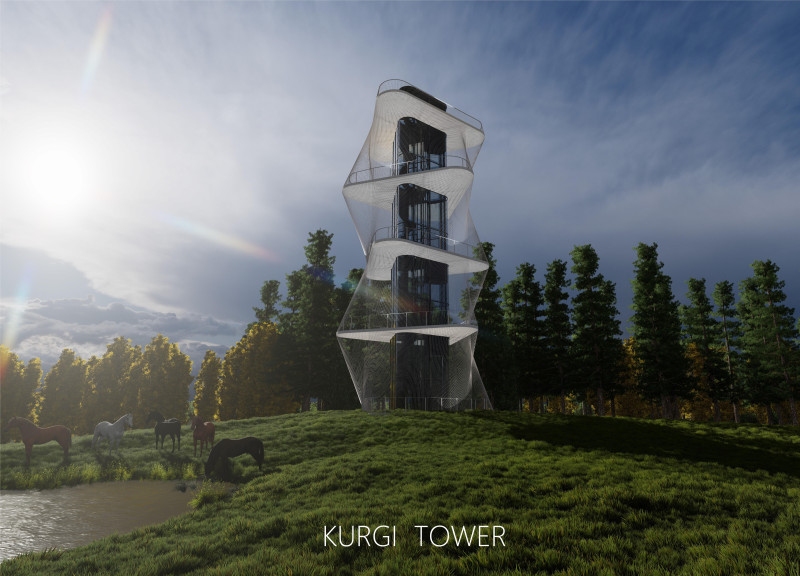5 key facts about this project
The design features a spiral form that not only enhances aesthetic appeal but also optimizes the spatial experience as visitors ascend. The Kurgi Tower’s foundation is triangular, contributing to its stability while allowing for a gradual rotation of the floor plates. Each level is equipped with open balconies, providing panoramic views and reinforcing the project’s purpose as an observatory. The interior layout efficiently accommodates sleeping areas, lounges, and communal spaces, supporting multifunctionality.
Sustainability is a core principle of this design, evident in the material choices and construction techniques employed. Steel serves as the primary structural material, ensuring durability and strength, while expansive glass panels fill the façade, promoting natural light and offering seamless connections to the surroundings. The incorporation of a cable system enhances both the structural integrity and aesthetic coherence, creating a visually dynamic exterior. Concrete is utilized in the core for additional stability, reinforcing the tower's vertical forms. Wooden elements within the interiors enhance visitor comfort, providing warmth against the more industrial qualities of steel and glass.
The Kurgi Tower's unique approach lies in its integration of modern architectural elements with a profound respect for the environment. The design does not disrupt but rather complements the existing landscapes, an aspect often overlooked in similar projects. By creating spaces that welcome interaction with nature and implementing sustainable practices, the tower sets a benchmark for responsible architecture in sensitive ecological zones.
Visitors are encouraged to explore the intricacies of Kurgi Tower through its architectural plans and sections, as well as detailed insights into the architectural designs that define this project. Understanding the depth of thought and planning throughout the entire architectural process will elucidate the innovative ideas that guided the creation of this notable structure.


























